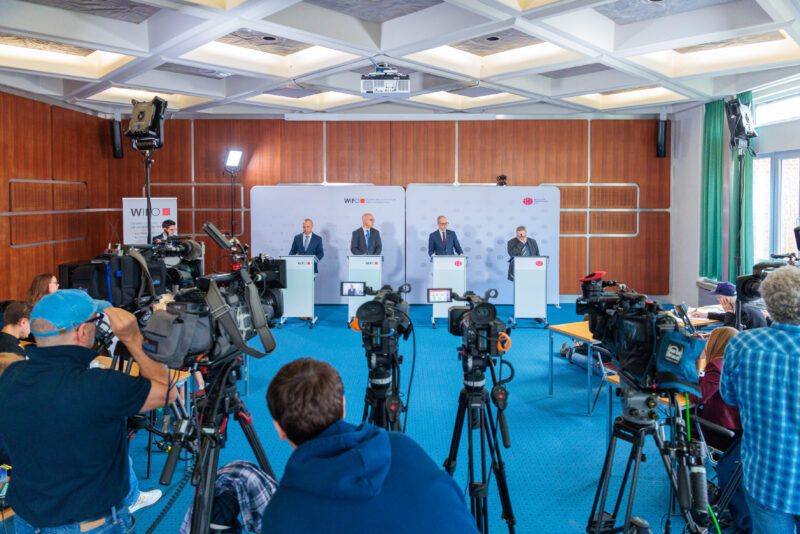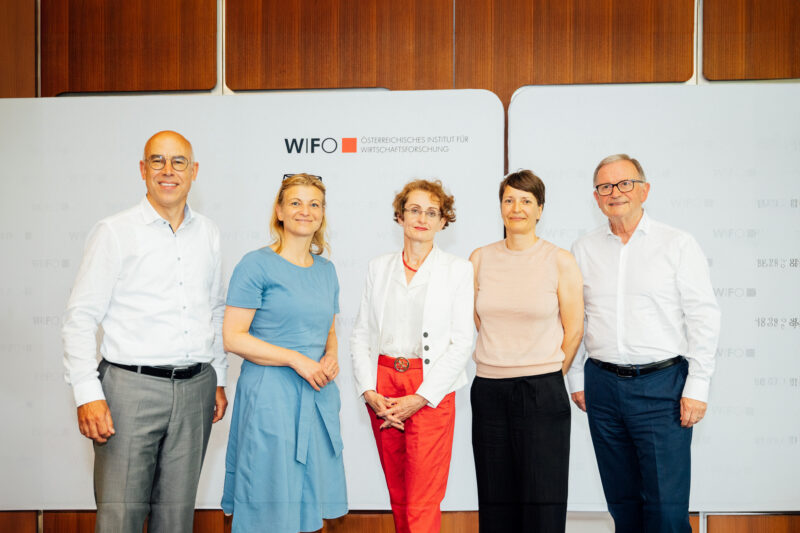
Recovery in Industry Favoured Economy in the First Quarter of 2021: GDP +0.2 Percent
Important Information
Since the end of September 2020, the Quarterly National Accounts are compiled and published by Statistics Austria. The WIFO Flash Estimate builds on this calculation and provides an estimate for the following quarter. This includes GDP and components in the form of seasonally and working-day adjusted rates of change compared with the previous quarter (key figure according to Eurostat standard).
The figures presented in this calculation are first estimates and as such are subject to uncertainties and possible revisions.
At the end of May 2021, Statistics Austria will publish quarterly data for GDP and main aggregates for the first quarter of 2021 based on more complete data.
The business activities in these sectors continued to be burdened by the restrictive measures taken to contain the COVID-19 pandemic. On the demand side, consumer spending by private households continued to decline, while there were positive trends in investment.
After the decline in the fourth quarter of 2020, the domestic economy stabilised. According to the first calculations, GDP increased by 0.2 percent in the first quarter of 2021 compared with the previous period (key figure according to Eurostat). Year-on-year, this means a decline of 2.7 percent compared with the first quarter of 2020, where the first negative economic effects of the COVID-19 pandemic were already recorded.
In the first quarter of 2021, positive impetus came from the ongoing recovery of the industrial and construction sectors. Value added in industry (NACE B to E) increased by 2.6 percent in the first quarter (fourth quarter of 2020 +0.6 percent), and in construction by 3.6 percent (fourth quarter of 2020 –2.4 percent). By contrast, economic output in the consumer-related service sectors fell again as a result of the measures taken in the third lockdown, albeit not as massively as in the fourth quarter of 2020. Value added in trade, accommodation, food service activities and transportation fell by 3.1 percent; in other service activities, which include personal services (such as hairdressers), arts, entertainment and recreation, the quarter-on-quarter decline in value added was –4.6 percent (in each case compared with the previous quarter). Some companies in these sectors were entirely closed in the first quarter of 2021. Value added development continued to be supported by less physical contact-intensive services (such as in the IT, banking, insurance or real estate sectors) and public administration.
The supply restrictions imposed by the third lockdown (until 8 February 2021) in the trade and services sectors again resulted in a drop-in demand for private consumption, although this was much more moderate than in the fourth quarter of 2020. According to the first calculations, consumer demand by households (including private non-profit institutions serving households) fell by 0.2 percent in the first quarter of 2021 compared with the previous period (fourth quarter of 2020 –5.2 percent).
External dynamics are characterised on the one hand by the stabilisation of industrial activity and on the other by the shortfalls in international travel. Overall, exports decreased by 1.0 percent and imports by 1.5 percent compared with the previous quarter. Investment demand was also stable, with gross fixed capital formation up +1.7 percent quarter-on-quarter.


Publications
Please contact

























